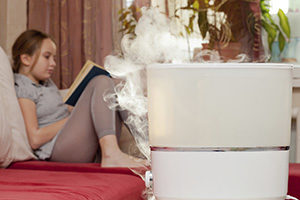Your home is not only a place where you rest and take stock of how your day has been, but also a place where your loved ones and your most treasured possessions are. This means you need to do all within your power to protect it and make it comfortable. Humidity is an inevitable element and at one point or the other, you must learn how to counter it. Humidity levels of between 45 and 50% are considered optimal below and above which you are likely to experience discomfort.
Levels of humidity below 30% can make your indoor space to be too dry for comfort and levels above 50% make the environment very humid and also enhance the chances of mold growing.
Problems of High Humidity
Normally, newer homes are more prone to humidity problems because of their tight construction. High humidity has been seen to cause condensation. If your home is not properly ventilated through natural or mechanical means, moisture can start building up above ceilings and behind walls thereby causing rot in the woodwork as well as making paint to peel. This is particularly noticeable around window and door frames.
While a dehumidifier is one of the recommended ways of sucking in the moisture and draining it outside, there are other ways you can explore to lower your humidity levels.
Exhaust Fans – Using the kitchen exhaust fan when cooking and bathroom fans where possible can help reduce moisture. Also, opening your windows can provide drier air from the outside to help you in controlling humidity levels.
Limit Interior Plants – With the push towards greener living, many people are keeping plants in their homes to give them the necessary boost in air cycle. This is excellent, however, it should be done with caution because overloading your home particularly in colder months when the windows are shut can cause buildup of moisture.
Vent Dryer Directly Outside – This is one of the main causes of indoor high humidity. You should ensure that the vent connections are checked on an annual basis for leaks. You may also consider installing an external vent if your home doesn’t have one in place.
Low Humidity Problems
As earlier said, humidity levels below 305 can cause coughs and dry throats. When this condition persists, cracks can start developing in moldings and wooden furniture. Many modern homes utilize forced air heating which distributes dry air within your home. As the temperature drops, the heat is turned up and this worsens the problem. When these conditions exist, you must do everything within your power to raise the humidity levels. Among the things you can do include introducing moisture to raise the humidity, using a portable humidifier, or investing in a whole house dehumidifier.
When you hear of humidity, don’t only look at lowering it but also explore ways of raising it when conditions necessitate. Striking a balance is the key to comfortable and healthy living.











